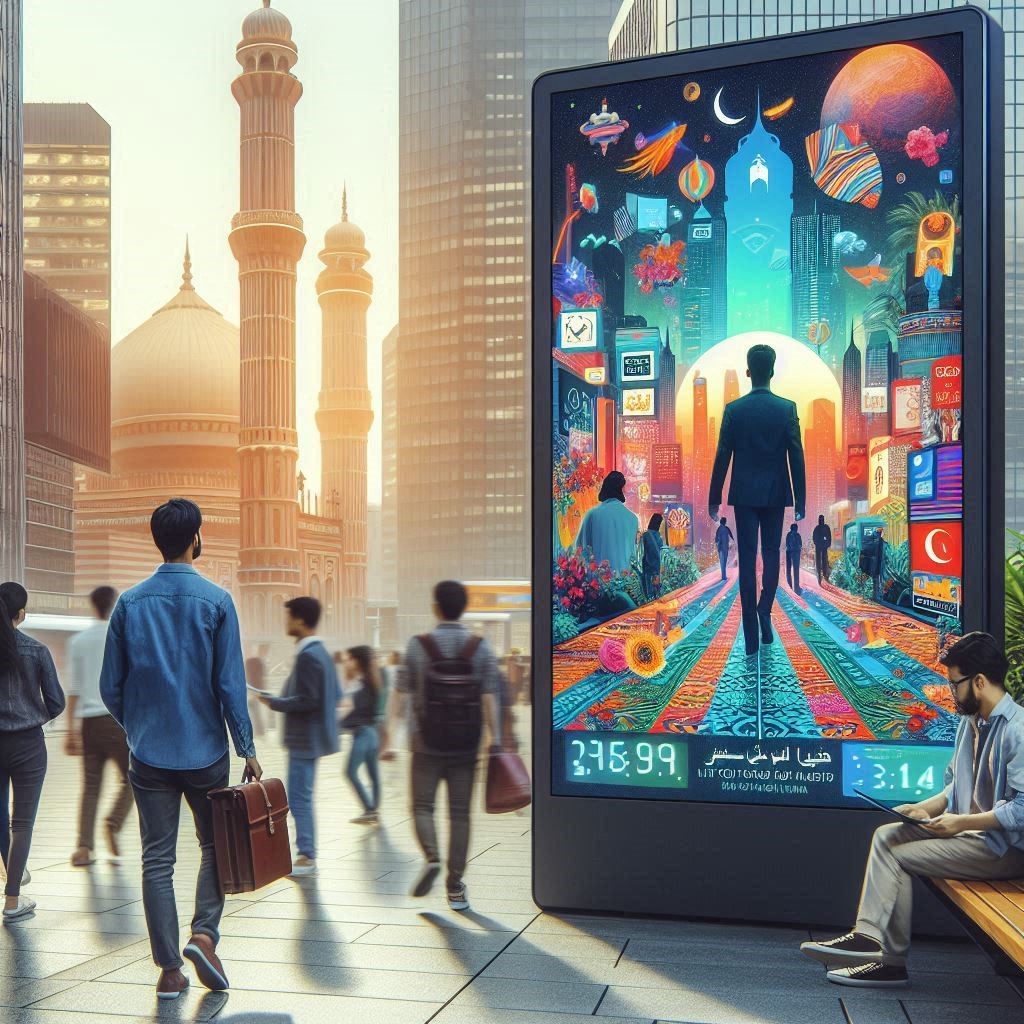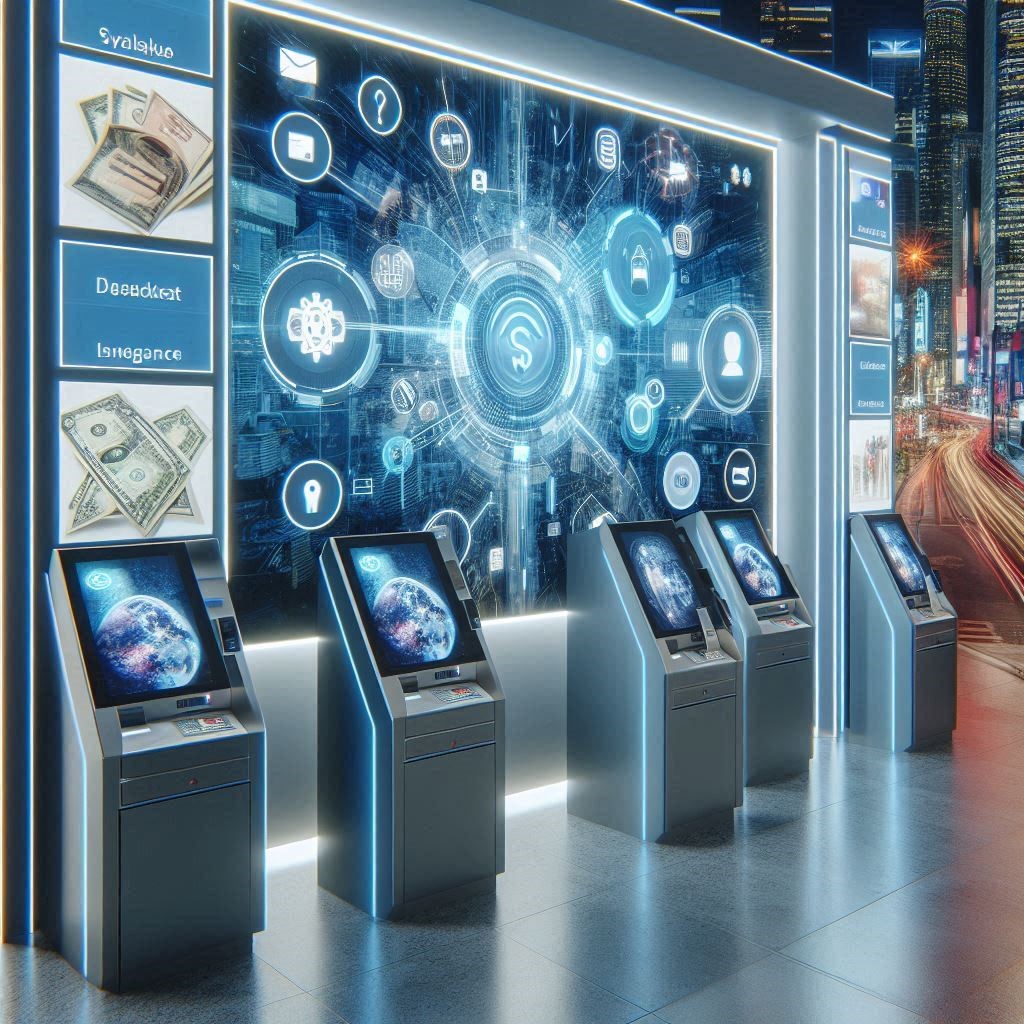The integration of Artificial Intelligence (AI) into digital signage is revolutionizing how businesses communicate with their audiences. From retail stores and airports to public transportation hubs and corporate environments, AI is transforming static displays into intelligent, interactive systems that provide personalized, real-time content. As consumer expectations evolve and technology continues to advance, the role of AI in digital signage is growing rapidly, creating new opportunities for engagement, efficiency, and innovation.
In the age of intelligent technology, the digital signage industry is undergoing a major transformation. No longer confined to static ads or rotating slideshows, modern digital signage is becoming dynamic, interactive, and hyper-personalized—largely due to the integration of artificial intelligence (AI). As businesses across retail, transportation, healthcare, hospitality, and corporate environments seek more effective ways to engage with audiences, AI is emerging as a game-changing force driving innovation, automation, and customer-centric experiences.

From One-to-Many to One-to-One Messaging
Traditional digital signage delivered the same content to everyone, regardless of context or audience. AI flips this model by enabling real-time personalization. Through technologies like computer vision, facial recognition, and demographic analysis, AI can identify the viewer’s age group, gender, even their mood—and adapt the content accordingly.
Imagine walking through a shopping mall and seeing a digital billboard display an ad tailored to your preferences based on your shopping behavior, time of day, and even the weather. That’s not science fiction—it’s already being implemented in sectors like retail and DOOH (Digital Out-of-Home) advertising. The result? More relevant messages, higher engagement rates, and improved conversion.
Real-Time Data + AI = Intelligent Content Decisions
The real power of AI in digital signage lies in its ability to process massive amounts of real-time data and make intelligent decisions. By integrating AI with data from sources such as traffic patterns, point-of-sale systems, inventory levels, or external APIs (like weather or event schedules), businesses can display content that matches the moment.
For instance, if a store’s POS system shows that a particular item is trending or low in stock, the signage can instantly promote alternatives or suggest complementary products. In transportation hubs, AI helps adjust signage to reflect flight delays, gate changes, or crowd levels, ensuring travelers receive accurate, timely information.
This context-aware content delivery ensures signage is not just a screen, but a smart assistant embedded into the customer journey.
Interactive Displays Powered by AI
AI also powers the growing trend of interactive digital signage—systems that invite users to touch, talk, or even gesture to access information or complete tasks. Combined with natural language processing (NLP) and voice recognition, AI-enabled kiosks and displays are capable of holding simple conversations, answering questions, or providing personalized recommendations.
This is transforming sectors like hospitality, where guests can use digital concierge screens to check in, get directions, or book services—without human intervention. In healthcare, AI-enabled signage can provide patients with health guidance based on symptoms. These systems are not just informative—they’re responsive and adaptive, enhancing user satisfaction and operational efficiency.
Learning from Audience Behavior
AI doesn’t just react—it learns. Over time, digital signage systems can track which content performs best, what times of day see the most engagement, and how different demographics interact with specific messages. This feedback loop helps marketers and facility managers continuously refine their content strategies, boosting the ROI of their digital signage investments.
Additionally, AI-driven analytics provide predictive insights. For example, if audience engagement drops in a certain location during particular hours, the system can automatically test new content or formats to recapture attention. This makes digital signage smarter and more autonomous, reducing the need for constant manual adjustments.
Download PDF Brochure @ https://www.marketsandmarkets.com/pdfdownloadNew.asp?id=513
Security, Privacy, and Ethical Considerations
As AI and data become central todigital signage Industry , concerns around privacy and data protection are increasing. Facial recognition and behavioral tracking require careful handling to avoid violating privacy laws or consumer trust. Businesses must ensure compliance with regulations like GDPR and implement transparent consent practices.
Leading signage vendors are now building privacy-first solutions, using anonymized data, edge processing (to avoid cloud uploads), and clear opt-in interfaces. Ethical AI use will be a defining factor in the long-term trust and adoption of AI in digital signage.
What’s Next: AR, Smart Cities, and Autonomous Content Creation
The future of AI in digital signage is set to grow even more immersive and interconnected. Trends to watch include:
- Augmented Reality (AR) integration for experiential marketing and wayfinding.
- AI-generated content, including ad copy, graphics, or even video tailored on-the-fly.
- Integration with smart city infrastructure to deliver location-based public information and advertising.
- Multi-language and accessibility features powered by AI for diverse, inclusive communication.
- As 5G and edge computing mature, these intelligent displays will become faster, more responsive, and capable of handling richer, more complex content.
AI is redefining the digital signage landscape—turning screens into interactive, intelligent, and intuitive platforms. The ability to personalize content, adapt to real-time data, and learn from audience behavior is revolutionizing how businesses connect with people in physical spaces.

For companies looking to stay ahead in an increasingly digital world, investing in AI-powered signage isn’t just a tech upgrade—it’s a strategic move toward smarter engagement, better experiences, and measurable results.
Smarter, Personalized Experiences
One of the most profound ways AI is shaping the future of digital signage is through personalization. Traditional digital signage often relied on scheduled content that was static and fixed—like advertisements or announcements that played on a loop. Today, with AI-powered systems, digital signage can analyze a variety of factors to deliver more relevant and targeted content.
AI technologies like machine learning and computer vision enable digital signage to recognize and respond to specific audience behaviors in real time. For example, facial recognition and demographic analysis can identify the age, gender, or mood of individuals passing by, and tailor content accordingly. In a retail setting, this means customers can be shown ads or offers related to their interests, increasing the likelihood of engagement and conversion.
For instance, a customer walking into a clothing store may be shown ads for clothing items that match their previous purchases or browsing behavior, enhancing their shopping experience and improving sales outcomes.
Real-Time Data and Dynamic Content
AI’s ability to process real-time data also allows digital signage to display dynamic content that adapts to changing conditions. For example, digital signs in transportation hubs can show up-to-date schedules, alerts, or advertisements based on real-time data such as flight or train delays, weather changes, or even audience sentiment. In a corporate setting, meeting room signs can automatically update based on room availability or schedule changes.
Moreover, AI’s ability to analyze data from IoT (Internet of Things) devices means digital signage can respond to environmental factors in real-time. For instance, displays in public spaces can adjust their brightness depending on ambient light conditions or even change content based on foot traffic data. This level of interactivity helps optimize content delivery and ensures relevance and efficiency.
Enhanced Audience Engagement through Interaction
Beyond merely displaying content, AI is enabling interactive experiences in digital signage, making displays much more engaging. Natural language processing (NLP), gesture recognition, and voice interfaces are opening new avenues for audience interaction. With AI-powered interactive displays, consumers can actively engage with content, request more information, and even make purchases, all from the screen.
For example, an interactive kiosk in a shopping mall could allow customers to browse available products, check their availability in nearby stores, or even make payments directly through the display. AI algorithms track user behavior, learning preferences and providing increasingly relevant suggestions over time.
This shift to interactive displays empowers consumers to interact with content on their terms, which enhances the customer experience and fosters a stronger connection between the brand and its audience.
Streamlining Operations with AI-Driven Analytics
Another powerful impact of AI in digital signage is its ability to provide actionable insights through analytics. AI-powered systems can gather and analyze vast amounts of data from audience interactions, traffic patterns, and even environmental sensors. This data is then used to optimize content strategies, improve customer experience, and boost return on investment (ROI).
For example, AI can identify which content is performing best, what times of day drive the most engagement, or which demographics are responding most positively to certain types of messaging. This allows businesses to optimize their content delivery and adjust their strategies based on real-time feedback, ensuring that every interaction is as effective as possible.
Moreover, predictive analytics can help businesses understand audience behaviors and trends, allowing them to forecast future needs and optimize their digital signage network accordingly.
The Future of AI in Digital Signage
As AI technology continues to evolve, its integration with digital signage will only deepen. Future innovations may include even more advanced real-time content creation, where AI itself will not just tailor content but dynamically generate creative assets, allowing brands to create entirely unique and adaptive advertising or informational experiences. Augmented reality (AR) and virtual reality (VR) technologies may also become more intertwined with AI-driven digital signage, offering immersive, interactive experiences that further blur the line between physical and digital worlds.
Moreover, as AI becomes more sophisticated, its ability to predict consumer behavior and deliver hyper-targeted content will evolve. Digital signage could eventually become an integral part of a fully connected smart city, seamlessly integrating with other IoT devices and urban infrastructures to provide citizens with personalized, context-aware content.
AI is undeniably reshaping the landscape of digital signage and interactive displays, making them smarter, more dynamic, and more capable of engaging and connecting with audiences in real-time. As this technology continues to advance, the possibilities for innovation and personalization will only grow. Businesses across various industries are already benefiting from AI-enhanced signage solutions, and the future promises even more groundbreaking developments that will continue to redefine how we interact with the world around us.
With AI-driven content, real-time interactivity, and advanced analytics, the next generation of digital signage is not just a passive display—it’s an intelligent, responsive system that’s evolving alongside consumer needs and behaviors.